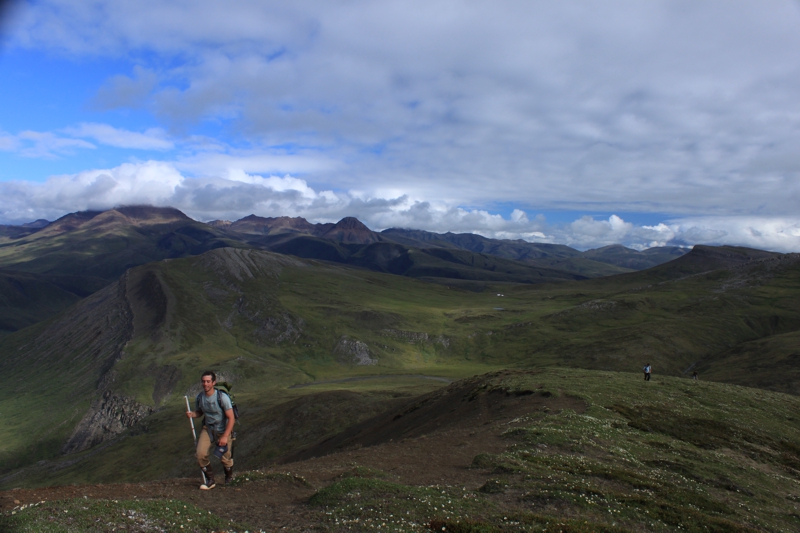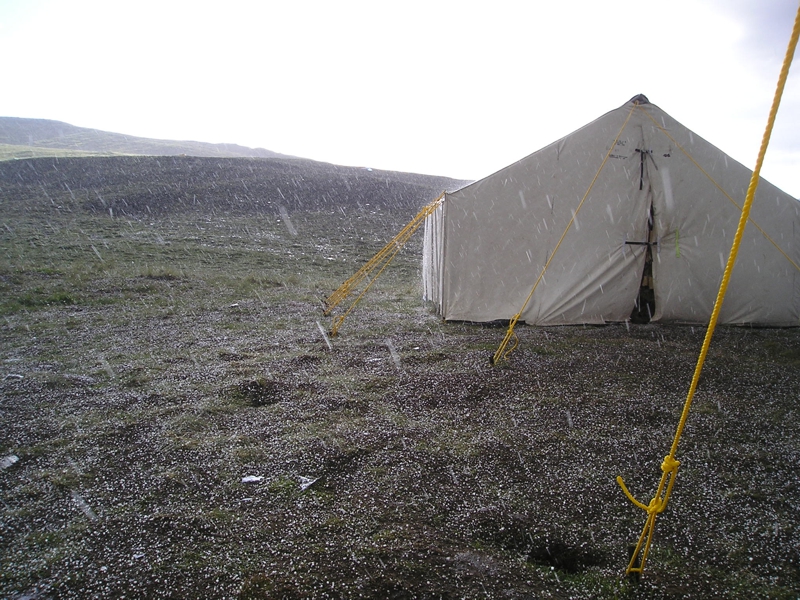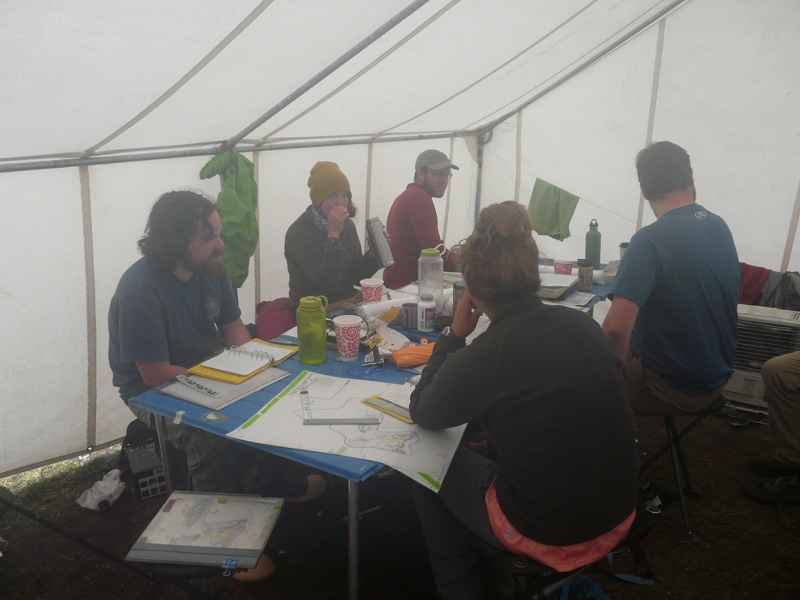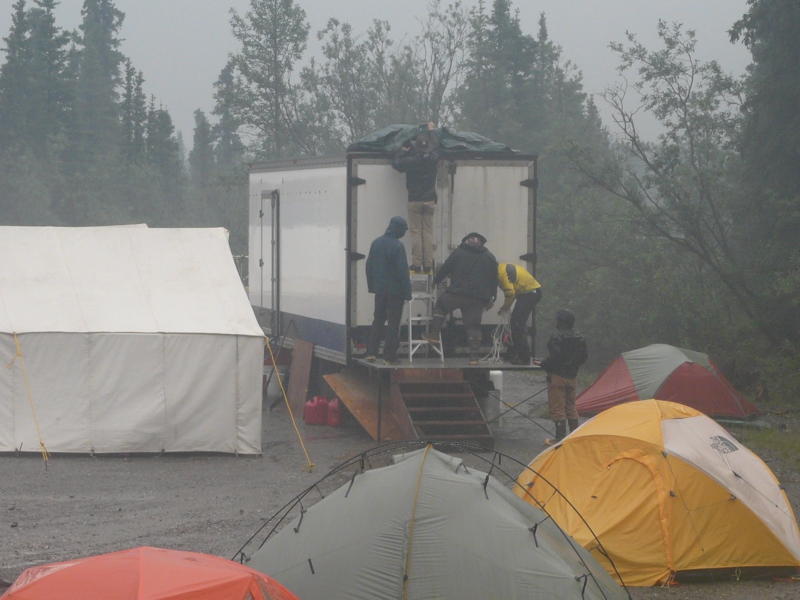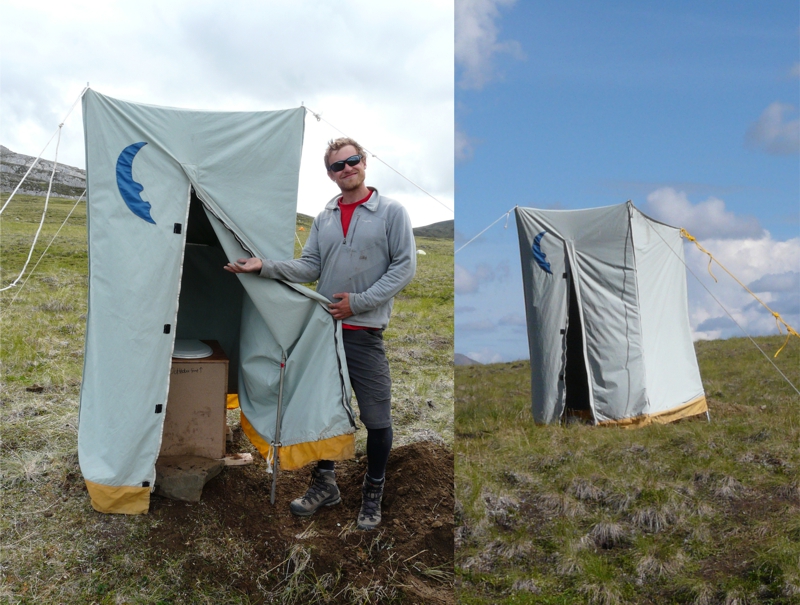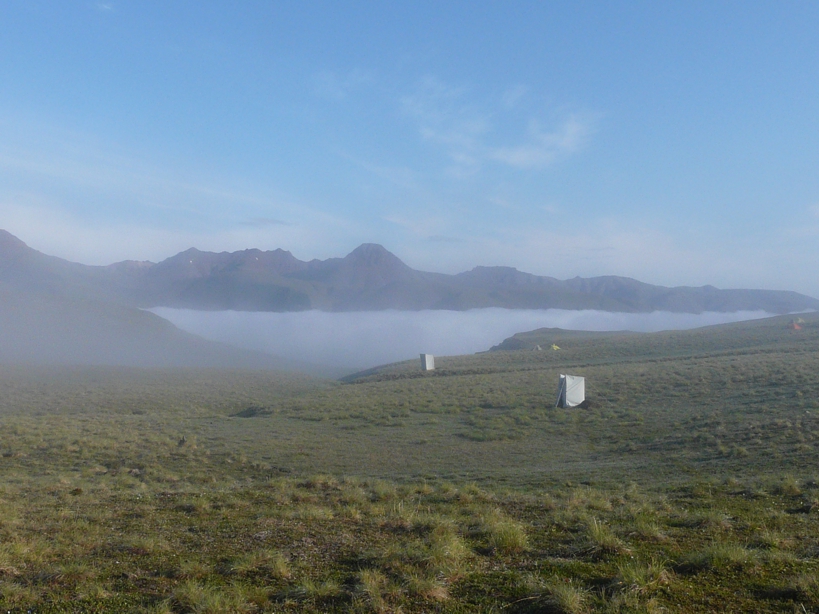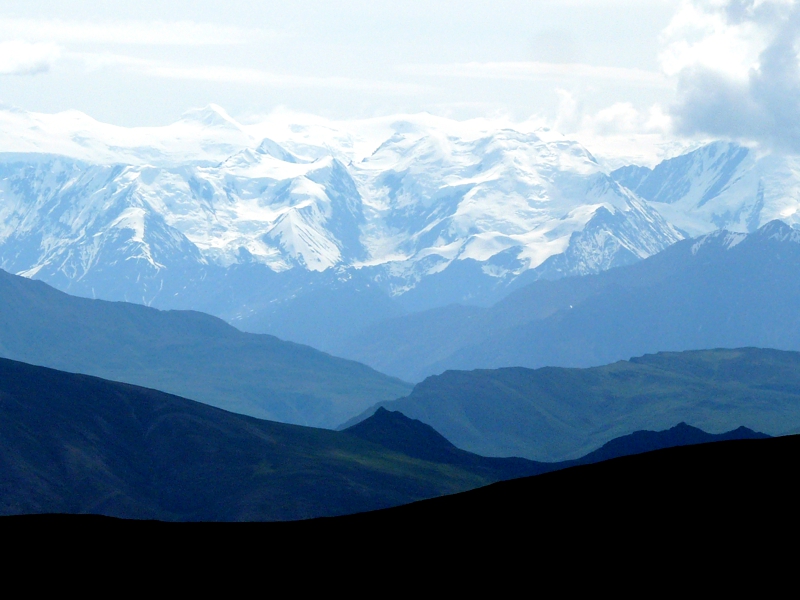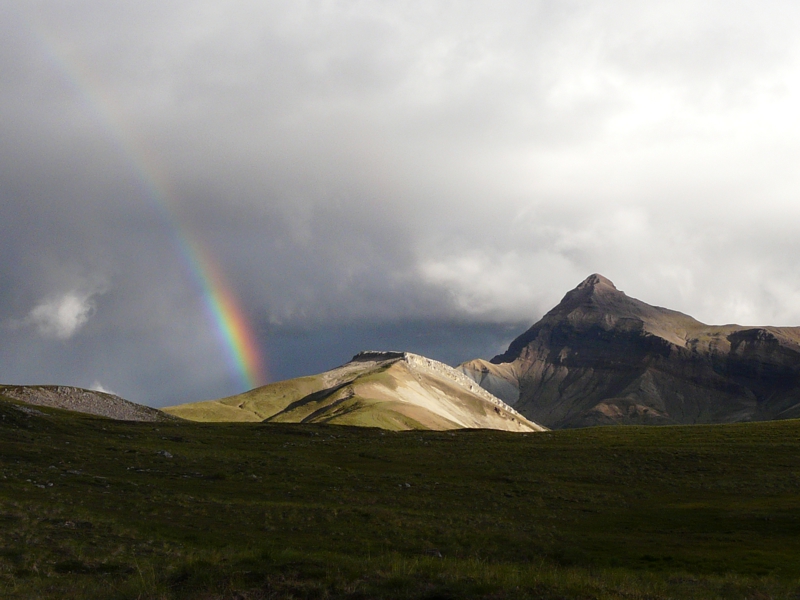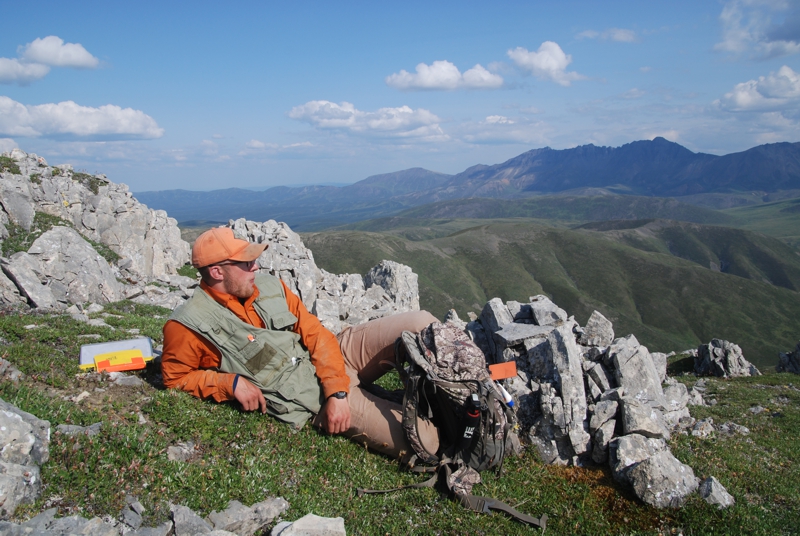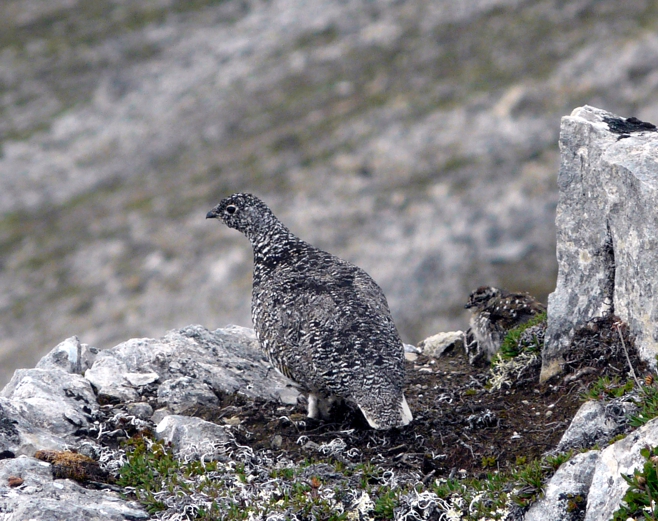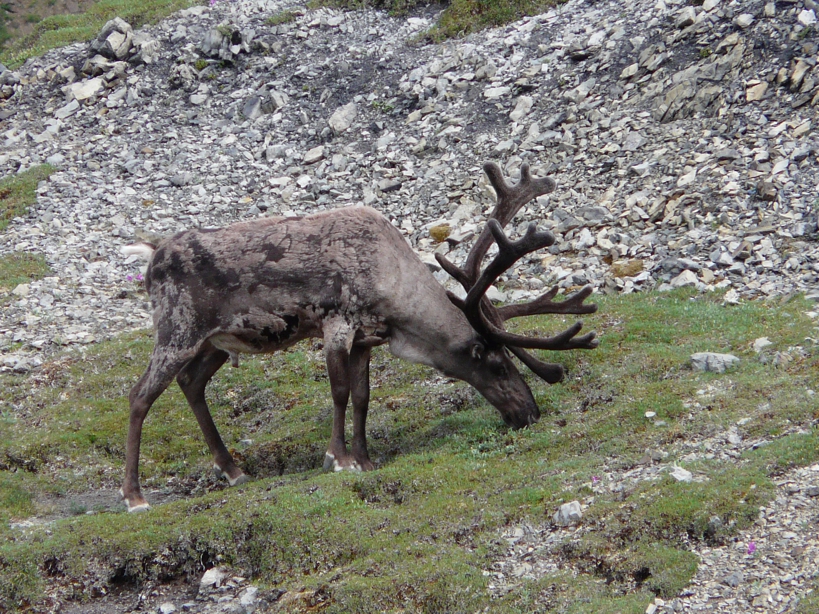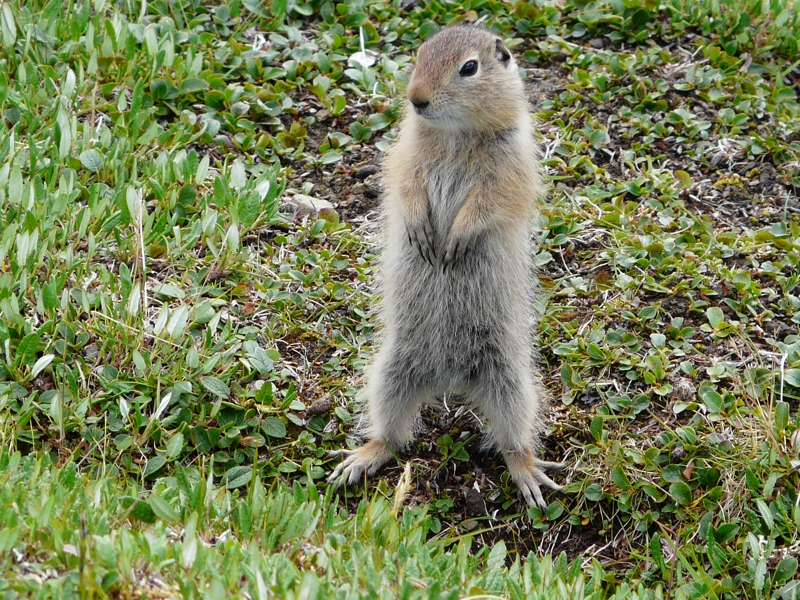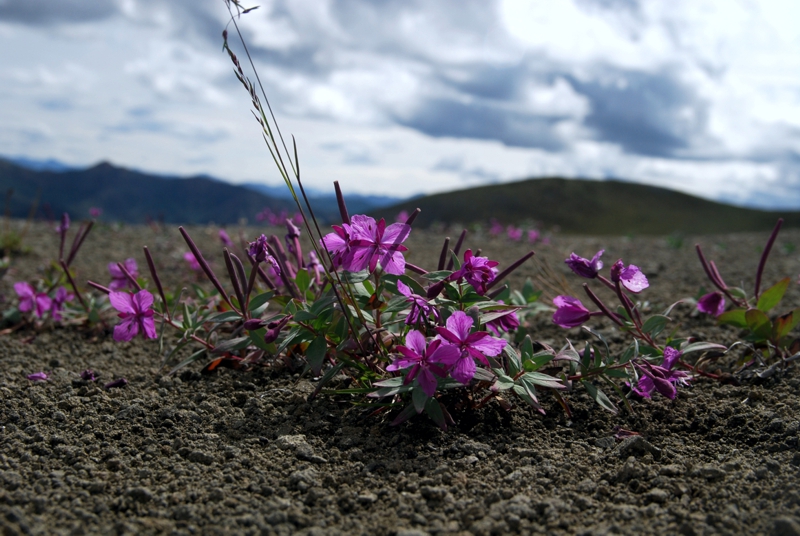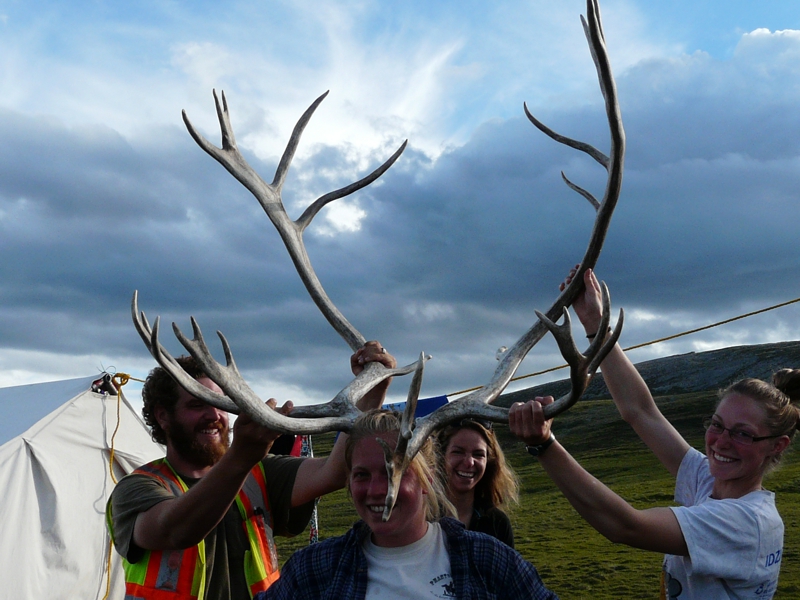Challenges and Charm of Geologic Fieldwork in Alaska
Alaska’s wilderness is an exciting field area for geologists, thanks to the great geology and the amazing expanse of land barely affected by civilization. This comes with a price. Access to field areas can be difficult and costly, rescue in case of emergency difficult, certain amenities that are considered standard in most parts of the lower 48 or Europe are lacking. It is therefore important to point out certain challenges that field camp participants will face:
- Camping: Outside Fairbanks, we camp. Each participant sleeps in their own tent. Our office is a WeatherPort tent. When it rains for a longer period of time, it may be difficult to dry our gear, and we may get stuck in our tents. This is a quality test for each person’s tent and rain gear.
- Team work: We will work with the same group of 10-20 people for 3 weeks. It is crucial to try to get along with each person, otherwise it will become miserable for the whole group.
- Wellness: In truly Alaskan fashion, we forfeit the comforts of civilization for a while to wash ourselves and do our laundry in a creek, use a camping shower and one of the fancy outhouses when our nature calls.
- Field work: A typical day in the field may include a couple of hours hiking - with frequent stops to look at outcrops and take notes and samples. 8 hours of fieldwork each day are common. While you don't have to be an outdoors person, a certain amount of prolonged physical exercise is to be expected.
- Weather during field work: While we may stay in camp during a heavy rainy day, you will have to endure rain when you are out in the field. Without the proper rain gear, it is not unusual to get soaking wet. The reality of fieldwork in Alaska is that it can become uncomfortable. Drying out can also be problematic.
- Safety: Although every effort is made to make this Field Camp a safe one – the Field Camp Director is a certified Wilderness First Responder – all participants take first aid course, we map in groups of 3-5 students – rest risk remains. While out in the Limestone Gap fly camp (Part 2), weather may not permit immediate medical evacuation. We also have to keep in mind that we are in bear country. Despite mapping in groups and having bear spray ready, you have to be aware that there is a remote chance of being attacked by a bear. Each group is equipped with a handheld radio to communicate with base camp or other groups.
- Communication with the outside world: In the Central Alaska Range and the Talkeetna Mountains, cell phone service is spotty. To guarantee communication, we use satellite phones.
After listing all the challenges that we may encounter we should not forget that you have the unique opportunity to experience Alaska’s wilderness. The Cantwell Glacier south of the Denali fault, the vast open tundra in Limestone Gap where the only humans you will encounter belong to your mapping crew. In order not to spoil the experience, we recharge our equipment with solar panels.
The views in the Central Alaska Range and Limestone Gap are spectacular, the magnificent snowy peaks of the Central Alaska Range and the Chugach Mountains. Open tundra reveals much of the geology and does not require trails to map.
You will be able to see caribou, ptarmigans, golden eagles, with a bit of luck, fox or marmots. Our neighbors in Limestone Gap will be arctic ground squirrels, who will try to nibble at your boots and are anxious to visit your tent.



